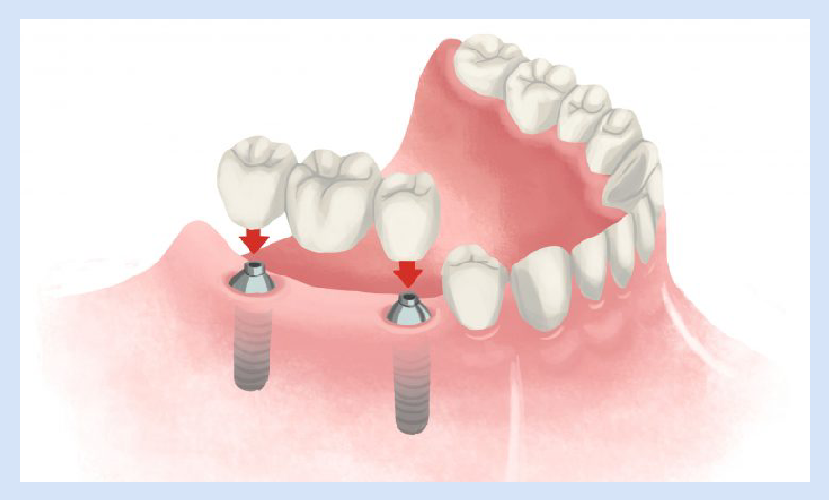8:00 to 20:00 (Mon - Fri)
on request (Sat - Sun)
PROCEDURE DETAILS
Dental Prostheses

Implant Anchored Bridges
Dental prostheses, also known as dental bridges, are designed to replace missing teeth or cover up defects in existing teeth.
Dental bridges are a popular and effective option for restoring missing teeth, and we often utilize their many benefits with our patients.
A dental bridge is a permanent appliance that consists of several pieces fused to fit into the open space where the tooth or teeth used to be.
Abutments are the teeth that support the bridge and may be natural teeth or dental implants. The false teeth, or pontics, are attached to the abutments and fill the gap left by the missing teeth.
Dental bridges can improve the function of missing teeth by making it easier to eat and speak and preventing surrounding teeth from shifting into the gap left by the missing teeth.
They can also improve appearance by filling in gaps and creating a more uniform look. Additionally, dental bridges can prevent bone loss in the jaw, which can occur when teeth are missing.
The process of getting a dental bridge requires multiple visits to the dentist. During the first visit, the abutment teeth are prepared by removing a portion of their enamel to make room for the bridge.
Next, impressions of the teeth and gums are taken to create the bridge in a dental laboratory. A temporary bridge may be placed while the permanent bridge is being made.
Once the permanent bridge is ready, it is bonded to the abutment teeth and adjusted for a comfortable fit.
Porcelain leads the list of dental bridge materials. With their ability to emulate the look and feel of natural teeth, porcelain bridges have become a favorite for those seeking both durability and aesthetic appeal.
The process of dental implant surgery typically involves several steps:
-- Preparation: prepare the abutment teeth by removing a portion of their enamel.
-- Impression: take an impression of the teeth to create the bridge.
-- Temporary:: apply a temporary bridge while waiting a permanent one.
-- Placement: place the permanent bridge making any necessary adjustments.
-- Cementation: secure the bridge in place with dental cement.
Consultation and Exam
Abutment Preparation
Dental Impressions
Temporary Bridge
Placement and Adjustment
Secure With Cement

Ongoing Hygiene is a Must
While a dental bridge is an excellent solution for missing teeth, like natural teeth, they must be treated with the same oral hygiene regime as a patient’s real teeth. That means regular brushing and flossing after every meal.







